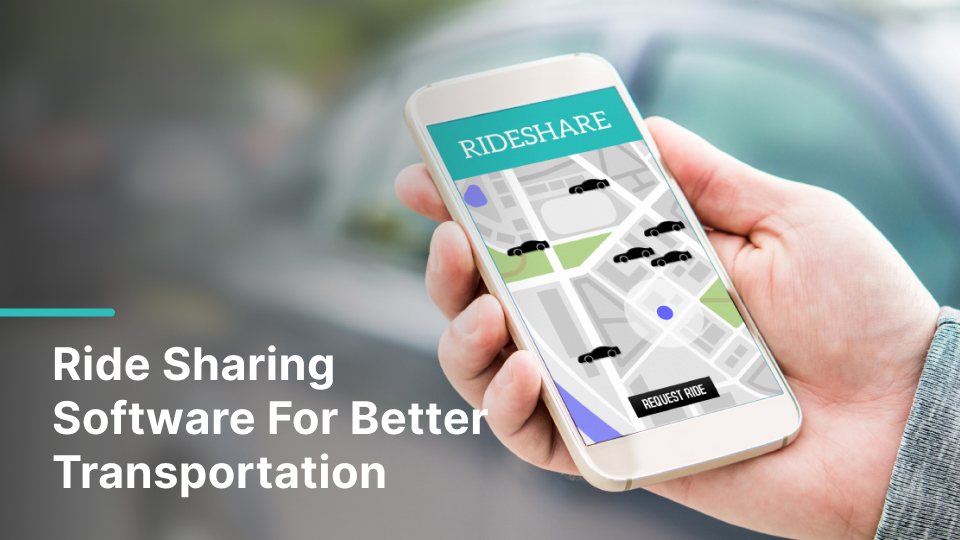
How to Provide Better Transportation Services With Ride Sharing Software?
Ride sharing software integration with smart cities has paved the way for a more efficient, sustainable, and connected transportation solution in the landscape of urban mobility. This transformative synergy between ridesharing solutions and smart city infrastructure is changing the way people travel inside urban areas.

In this blog, we’ll discuss the key aspects of ride sharing management software integration, its impact on smart cities, and how it helps build the transportation of tomorrow.
Ridesharing- A disruptive force in transportation
Ride sharing service offers a convenient and affordable alternative to owning a vehicle. This way, it has disrupted traditional transportation models. The rise of popular ridesharing platforms, such as Uber or Lyft, has fundamentally changed the way people commute, minimizing the dependence on personal cars. Also, it has encouraged the shared economy to a great extent.
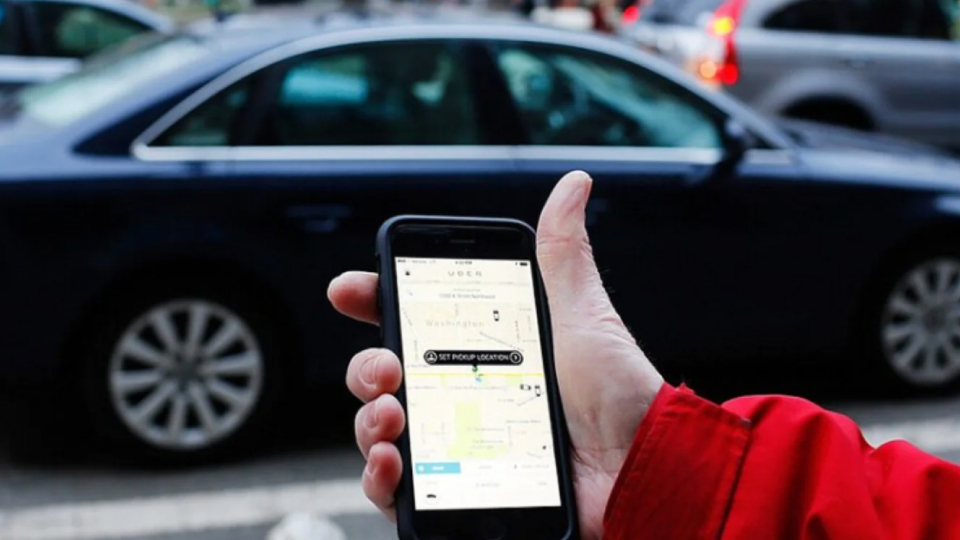
With continuous growth of urban population, cities face some critical challenges, such as traffic congestion, pollution, and inefficient public transportation. Technology is the key to overcome these challenges and improve the quality of life for urban residents. Ridesharing solution integration plays a vital role in aligning these goals of smart cities.
The need for smart solutions in urban transportation
Seamless connectivity and integration with existing urban infrastructure are two basic requirements for seamless commute. Also, it engages real-time data transfer with traffic management systems and public transportation networks.
What is ride sharing software?
Ride sharing software is designed to connect riders with drivers for shared ride services. These services enable individuals to use their personal vehicles for providing rides to others who are booking rides through mobile applications. The primary goal of ride sharing is to match drivers with passengers heading in the same direction, allowing for a more cost-efficient and environment-friendly daily commute.

Key components of a ride sharing management software include:
A. Mobile app
B. GPS tracking, intelligent routing, & traffic management
C. User profiles
D. Payment systems
E. Rating & review system
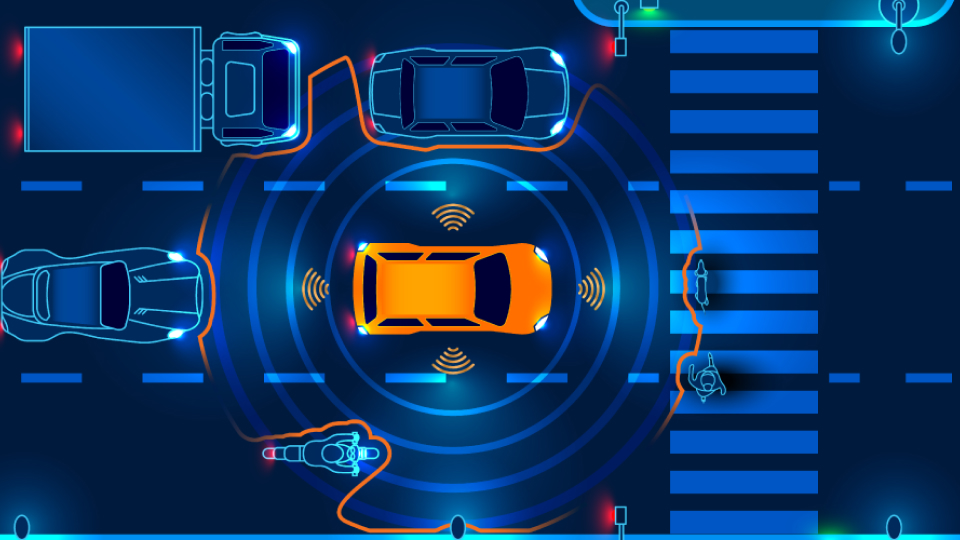
How does an effective software integration maximize profits for ridesharing services?
Ride share management software integration provides a myriad of benefits to create a more efficient and connected urban transportation system. This is why we can see a massive demand for corporate ride sharing software. Let’s explore some of its key benefits:
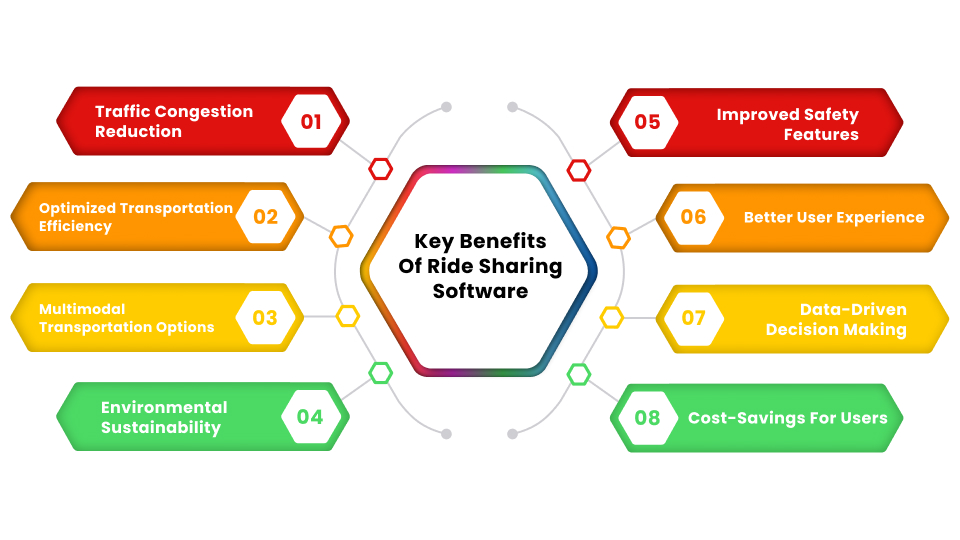
Traffic congestion reduction
In urban areas, traffic congestion is a pervasive issue. It leads to wasted time, excessive fuel consumption, and environmental pollution. Integration of a ride share solution enables real-time data analysis and smart routing. It optimizes routes and guides drivers away from the congested areas.
Optimized transportation efficiency
Rideshare systems enhance overall transportation efficiency. It includes better communication with public transport systems, reduces wait times, and improves the reliability of urban mobility.
Environmental sustainability
Ride hailing solutions are adopting electric vehicles, encouraging shared rides. It contributes to a significant reduction in carbon emissions. Moreover, it aligns with sustainability goals and fosters an environment-friendly eco-system.
Cost-savings for users
Shared rides are a reasonable alternative to car ownership, as users can share rides and split costs. Smart integration further enhances this by optimizing routes, minimizing travel time and fuel consumption, resulting in cost-savings for riders and drivers.
Multimodal transportation options
Smart integrations surpass traditional rideshare services, incorporating multiple modes of transportation including bicycles, scooters, and public transit. This multimodal approach provides users with more transport options, promoting flexibility and accessibility within the urban landscape.

Improved safety features
Advanced safety features, such as real-time tracking, emergency service integration, driver background checks have made ridesharing services more acceptable. These measures improve passenger safety and contribute to building trust in ridesharing as a trusted mode of transportation.
Better user experience
Ride share solution integration improves overall user experience. Mobile app integration, cashless payment, and real-time updates on driver locations lead to a seamless and convenient transportation experience for users.
Data-driven decision making for urban planning
Rideshare solutions generate real-time data so that ride-hailing service providers can analyze them for better decision-making. Businesses can plan for better traffic management, optimized routes, and more efficient shortcut routes using such data analysis.

Accessibility for underserved areas
Where conventional public transportation is limited in remote areas, ride hailing software integration improves accessibility to transportation services in such areas. It ensures that a broader segment of the population can benefit from urban mobility.
The role of IoT in rideshare software integration
IoT and vehicle connectivity
The Internet of Things or IoT plays an important role in the integration of rideshare systems with smart cities. IoT devices provide real-time communication to make efficient coordination between rideshare platforms and broader smart ecosystems.
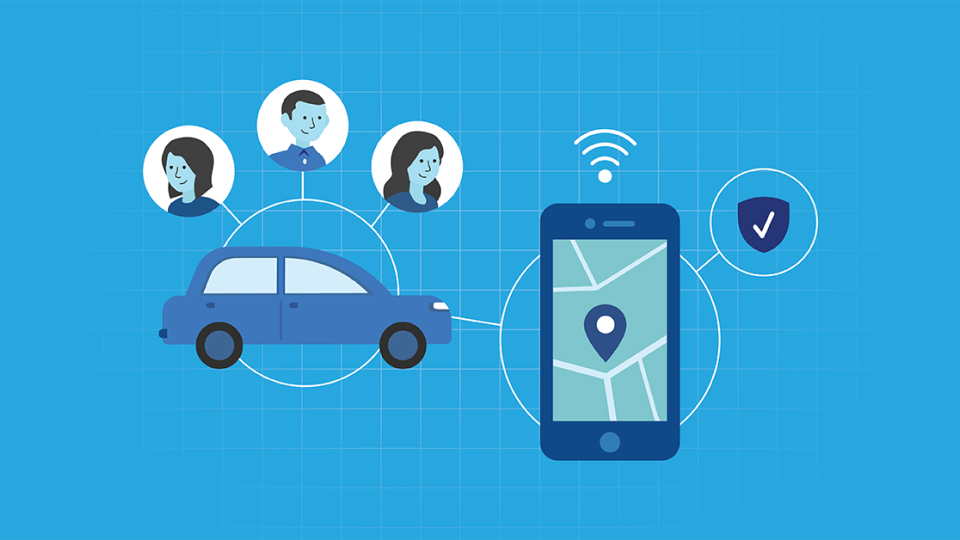
Data-driven decision making
IoT-powered data offers useful insights for city planners and rideshare operators. Stakeholders can make informed decisions to enhance the overall efficiency of the transportation system by analyzing traffic or route-related data.
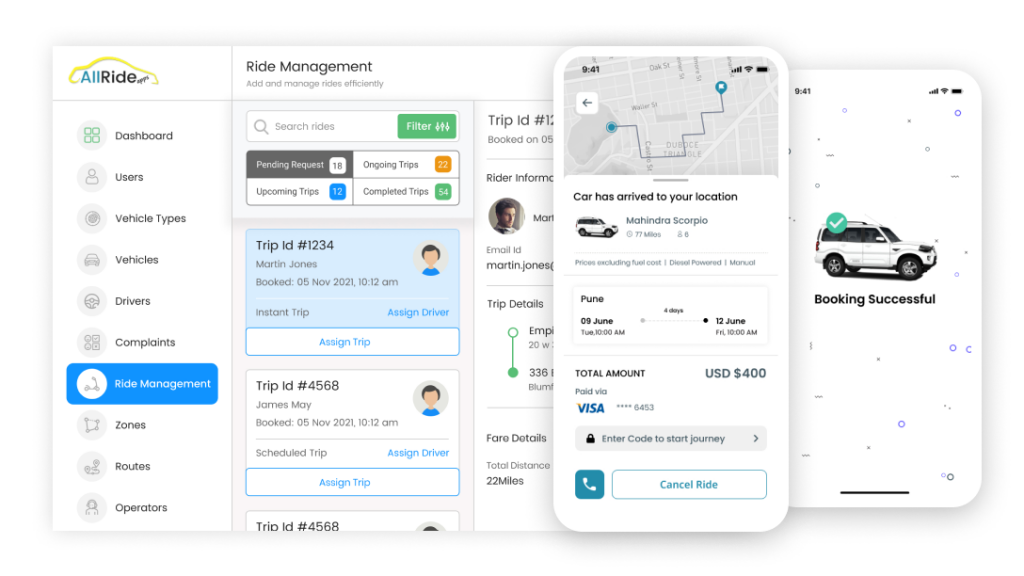
Environmental sustainability and rideshare integration
Reducing carbon footprint
Most smart cities prioritize environmental sustainability. Advanced rideshare software solutions align with this objective. By promoting shared rides and electric vehicles, ride share solutions help reduce carbon emissions and foster a sustainable and eco-friendly urban ecosystem.

Overcoming challenges and future prospects
Addressing privacy concerns
With emerging rideshare software integrations, addressing privacy concerns has become more important. Ride-sharing services need to strike a balance between data-driven efficiency and user privacy. It requires the right set of policies and tech safeguards.
Future prospects and innovation
The future of rideshare software with smart cities holds numerous exciting prospects. Innovations including autonomous vehicles, predictive analytics, and improved connectivity are the future of transportation.
What is the largest ride sharing technology? This is the burning question floating around the minds of all small and mid-level ridesharing businesses. However, it depends entirely on the nature, scope, and requirements of an individual business.

A Final Takeaway
Rideshare software integration with smart cities represents a pivotal step toward building the transportation of tomorrow. By fostering connectivity, leveraging IoT technologies, and promoting sustainability, this synergistic relationship between rideshare platforms and smart city infrastructure is reshaping the urban mobility landscape. As we continue to embrace innovation, the vision of a seamlessly connected, efficient, and environmentally conscious transportation system comes closer to reality.





